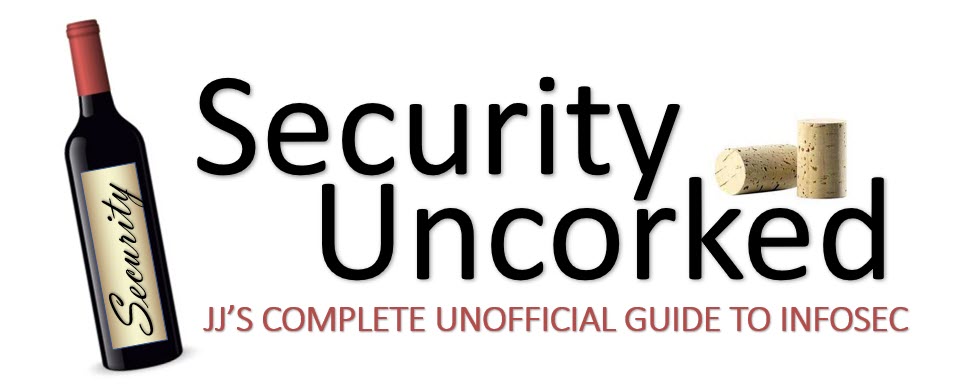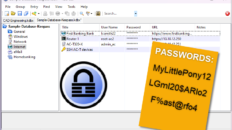On a daily (and nightly) basis I have the wonderful experience of talking to, chatting about, presenting on or asking questions of customers about NAC.
At each of these opportunities, I like to ask ‘Why are you considering NAC?”
Here’s my Top 5 of Why Customers Consider NAC (or think they want NAC). This is not based on any other organization’s research or polls, nor is it based on analyst analysis. It’s not based on forethought or musings of an ‘expert’. It’s just my personal experience from my daily interactions.
#1: Endpoint Compliance
I put this one first, because I think it’s the most-hyped and possibly least significant. I know, that’s harsh, especially when endpoint compliance seems to be the big bat NAC carries around. Truth be told, it’s more of an ‘icing on the cake’ for the people I talk to. Until the auto-remediation features are a little more mature, the idea of checking for much beyond presence of anti-virus and possibly patches is unattractive. Frankly, endpoint compliance for LAN-based devices can be a Charlie Foxtrot except under the most ideal circumstances. There are many large organizations and DoD groups that need endpoint compliance, and that’s a primary driver for them. For the rest, one of the other reasons below is a primary compelling feature and endpoint checking is just another knob they can play with.
The lack of fervent interest in endpoint checking is why I had to disagree so strongly with Stiennon when he advised in his NWW article “Don’t even bother investing in NAC”. The entire premise of his issues with NAC center around various endpoint checking. (You can check out Shimel’s response too Stiennon’s blog here.)
#2: Guest Access
Believe it or not, the most frequent response I get for “why are you considering NAC” is “guest access”. Guest access seems to be a thorn in every organization’s side. It’s a simple problem with impossibly complex solutions… or so they think. For years, we’ve been provisioning safe and secure guest access for customers with the use of clean and simple protocol-less VLANs and so, I know that about 82% of the time, there are much simpler ways to offer guest access than by rolling out a full NAC implementation. If guest access is your primary and only goal with a NAC solution, there’s probably a better, faster and less expensive solution. If money and time are no object, then NAC can be a good way to get from point A to B and give you a few fun technical trinkets to play with.
#3: Edge Port Security
After guest access, the next thing I hear most is interest in adding edge port security with a 802.1X NAC solution. (We call this Layer 2 NAC.) I tend to think for the time being, this is NAC’s sweet spot. Note I said ‘for the time being’, I think this may change in the next 18-24 months. But for now, the ability to lock down edge ports and secure switch-to-switch links is an extremely attractive feature. Outside of the 802.1X protocol, there aren’t really any other ways to skin this cat. I know what you’re thinking… you don’t have to do NAC to use 802.1X… and that’s certainly true, but for a network of any size, NAC makes an 802.1X implementation easier to manage and monitor centrally and gives you more of that NAC icing we all love.
When the 802.1X-REV comes out (probably early 2009) I think you’ll see organizations that have previously blown off 1X seriously considering it for all the added security and multi-user support it will bring to the table.
#4: User & Resource Accounting
Unless you have a 3rd party solution or want to dig through mounds of RADIUS syslogs, you probably don’t have a good way to account for user authentication and accountability of resource access throughout the network. Most vendors’ NAC solutions already have pretty good logging and reporting features built in today. Depending on the solution and integration of other devices, you may even get detailed accounts of which user viewed exactly what, when and from where. This is a great selling point to organizations that are trying to follow strict regulations for accountability of financial or extremely sensitive resources. The standards bodies (IEEE, TNC framework and IETF) are coming out with more and more ways to leverage 3rd party security devices within NAC. The IF-MAP is a great example and we’ll be seeing more I’m sure.
#5: Dynamic VLAN Assignment
Lastly, but not least, I hear a lot of customers that are looking for a good way to dynamically provision attributes, such as VLAN assignment and QoS to users or devices. It makes switch configuration and management much simpler, and eliminates the need to assign port-based VLANs. The ability to leverage your existing user directory and define both broad and very granular attributes is certainly a draw, and NAC is a great way to offer that.
That wraps up my Top 5. Of course, there are plenty more drivers, both business-based or technology-based, but these are the 5 I hear most.
# # #









Jennifer,
I believe you are right on with "Guest Access". This is the biggest driver that I see in my never ending quest for new customers.
I think this is what we see most in inquiries and as Alan Shimel puts it, "Are they one of Us or not?"
We advocate managing guests differently than your own managed devices and the paths for each type of user are different.
Thanks for your column. I think you are right on!
Jack